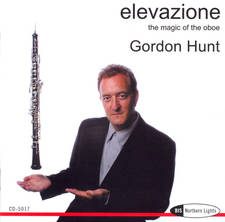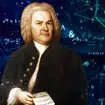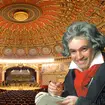Bach: Goldberg Variations - Full Works Concert Highlight of the Week
Jane Jones explores ‘Music which rests lightly on the wings of the unchecked wind.’
I was captivated by these words from the legendary Canadian pianist Glenn Gould, re-cycling a quote from Beaudelaire, to describe my highlight of the week: '‘Music which rests lightly on the wings of the unchecked wind.’
It sums up beautifully the way I feel about J.S. Bach's celebrated and much discussed work. Without it, I’d be left trying to encourage you to listen to music which, as the story goes, was meant to put you to sleep – and that’s the last thing I want to do with my nightly choices for the Full Works Concert.
Let’s deal with the age-old story about how this music came about and its connections with an insomniac aristocrat! Gould for one, thinks it’s a highly romanticised account which probably has very little to do with reality, but since it includes the name of the musician always associated with this piece, I’ll tell you the tale as I heard it when I first came across these famous variations.
Bach was approached by a dignitary at Court, none other than the Russian Ambassador, Count Hermann Karl von Kaiserling. His health wasn’t great and it meant he had terrible trouble sleeping, and believed that a little bedtime music performed by his musician in service would help. Now I’m never sure whether the intention was to entertain the Count during the small hours when he was wide awake, or whether the music was meant to put him to sleep! The musician in service turned out to be one of Bach’s most talented pupils, the harpsichordist Johann Gottlieb Goldberg, and since the Count was prepared to pay a small fortune, Bach set about composing the variations for his student to play outside the Count’s bedchamber.
The problem with this story is that the young student Goldberg would have only been 14 years old in 1741 when the Variations were published, and despite being immortalised by the music’s title, it seems unlikely that he was up to the job of playing the piece to Bach’s satisfaction. There’s an even more fundamental question about the commission itself. It would be usual for some sort of flowery dedication to the Ambassador to be inscribed on the front page of the published version, particularly given the rumoured fantastic fee of a golden goblet filled with a hundred Louis d’Or. There is no such dedication.
Finally, the truth is Bach loathed variations – he only completed one other simplified set in his long career – so there’s a serious question about why he set about such a task. It’s the lack of any information, other than the legend, which keeps us guessing as to the composer’s true musical intention.
One aspect that isn’t disputed is the origin of the opening Aria which precedes the thirty variations. This was written by Bach’s second wife Anna Magdalena, who gave it the title Sarabande, and it seems that this simple theme was enough to trigger Bach’s curiosity and imagination, producing one of the greatest ever works for the keyboard. There are plenty of detailed academic discussions about each and every variation, and the role of the aria at the end of the work. For those of us who can simply listen and marvel at the breadth and scope of the piece, I’ll leave it to Glenn Gould once again to sum up the profound nature of Bach’s music.
'It is, in short, music which observes neither end nor beginning, music with neither real climax nor real resolution. It has, then, unity through intuitive perception, unity born of craft and scrutiny, mellowed by mastery achieved, and revealed to us here, as so rarely in art, in the vision of subconscious design exulting upon a pinnacle of potency.'
And it sounds glorious. Join me for Friday's Full Works Concert to hear the Goldberg Variations performed by Glenn Gould himself in his celebrated recording from 1981.




























